Shall we gather at the river?
This is the title of a beloved Christian hymn from 19th-century America. But beyond that, it is a real question.
Shall we gather at the river?
What is the river referred to here? Leaving behind whatever the original poet might have been thinking, the river is the spiritual flow out of the Invisible that is the rightful gathering point for all humankind. It is at the center of the Family of Souls.
Shall we gather at the river?
This has particular significance to people who have awakened to that flow and are committed to bringing it to the world.
The great urge to gather at the river is within all human beings, no matter how repressed it might be. Martin Luther King, Jr., whose birthday we celebrate today, spoke of it as the urge to participate in Beloved Community.
This Pulse of Spirit is an expression of the river. The services offered by Emissaries of Divine Light are an outpouring of the river. Thank you for hearing the call:
Shall we gather at the river?
Over the New Year holiday, I wrote a 20-page paper for the Madras Institute of Development Studies. I titled it Teaching Primal Spirituality. In the paper, I said that transformational faith and an ecology of hope are inspired by the original teachings behind the world’s great faiths and spiritual paths.
On New Year’s Day, at almost midnight, I did my last proofreading of the paper. (I felt like I was back in university. It had references, a bibliography, and all!) As I read quotations from the Bhagavad-Gita, the Tao Te Ching, the Hebrew Bible, and more, I was in awe. Here was the river! An outpouring of enlightened awareness that has been given to humankind. So clear! So connecting! As I said in the paper, these were some of the most hopeful people the world has ever witnessed, and they brought hope to the world.
From the cosmic perspective, the river is ever-flowing. It is available for anyone to enter, to feel, and to drink from. Finding the river, we gather there and invite others to join us.
Gathering at the river, we make its flow immediately available to human culture.
Apart from the flow of the river, people live in ancient ignorance. Abraham was at the origin of three of today’s great faith traditions—Judaism, Christianity, and Islam. He lived in Ur, thought to be the largest city in the world in his day. Ur still stands today in Iraq, close to the Persian Gulf. Ur was in Mesopotamia, a cradle of civilization. Humankind had discovered agriculture and thus was emerging out of its hunter-gatherer past in the Paleolithic Period which was the Stone Age and the time of Cavemen, or to be more politically correct, Cavepeople.
While the people of the Middle East were finding agriculture and forming cities, the ignorance and superstition of the Stone Age came with them. Abraham addressed this primitive state of consciousness. He had left city life, living first in Haran, 700 miles to the northwest of Ur in present-day Turkey, and then traveling 500 miles south to the land of Canaan, in present-day Israel. He and his family became semi-nomadic. As you read the story, you might notice the frequent reference to tents.
Abraham faced the ignorance and superstition of his day. That superstition was rooted in a fearful relationship with supernatural entities and attempts to appease them in order to gain favorable treatment. Abraham was entering into a new relationship with the mystic reality of God. But the ignorant impulses born out of the Stone Age past were still there.
Abraham’s awakening occurred as he was about to sacrifice his son Isaac. This is how the story is told:
And they came to the place which God had told him of; and Abraham built an altar there, and laid the wood in order, and bound Isaac his son, and laid him on the altar upon the wood.
And Abraham stretched forth his hand, and took the knife to slay his son.
And the angel of the LORD called unto him out of heaven, and said, Abraham, Abraham: and he said, Here am I.
Genesis 22:9-11
The remainder of the Hebrew Bible contains the story of Israelite leaders, and later Jewish leaders, attempting to bring people out of their Stone-Age ignorance.
Other original leaders of the world’s great faiths and spiritual paths around the globe addressed the ignorance and superstition of their culture. The Neolithic Age gave way to the Bronze Age and the Iron Age, and then the Middle Ages, the Renaissance, and the Modern Ages. We had the Industrial Revolution, and now the Information Age, and perhaps the Age of Artificial Intelligence. Yet while there has been scientific advancement and technological development, Stone-Age ignorance dies hard, especially at the most pivotal level of human experience—the relationship we have with the mystical source of our existence.
The original faith leaders got pushback from the ignorance of the cultures into which they were born. Muhammed was thrown out of Mecca. Pharaoh sought to keep the Israelites enslaved in Egypt. The Buddha was challenged, and Jesus was crucified. But while they were alive, at least they were present to stand up for the truth they brought. When they were no longer here on earth, those who came after them felt free to distort their teachings as they chose. So the same ignorance they addressed in the culture around them infected the legacy of their teachings. This had the sad effect of hiding the liberating truth they brought, making it largely unavailable to people.
My book Primal Christianity: Uncovering the Original Teachings of Jesus of Nazareth documents how this process affected Jesus’ teachings. But he wasn’t the only one. In fact, the same thing happened for Emissaries of Divine Light when Martin Cecil died in 1988. The truth within his prolific writings became hard for people to access, simply because the meaning of them was distorted, and he wasn’t present to facilitate a clear access to the realizations he brought.
Much has changed since the Paleolithic and Neolithic Ages. The teachers who initiated the great faiths and spiritual paths in ancient times profoundly affected world culture. Scientific and cultural advancements have changed human civilization. The cosmic cycles of Creation roll on. And still, the stark reality is that we are faced with the same ignorance and superstition they were, though in new forms. The Stone-Age ignorance they addressed persists in modern clothes.
What is needed from us today is the same as what they brought to the world—the river. This is the flow from the Invisible that dispels the ancient ignorance and brings the essence of a new world.
Shall we gather at the river? Shall we be the river and bring the water of Life to the world?

A river has two banks, one on either side. In some cities, the river divides, in others it provides unity, especially where there are bridges to connect.
Let us be bridges, build bridges together, so that we can cross any kind of division.
Thank you David
“And a river went out of Eden to water the garden; and from thence it was parted, and became into four heads … And the LORD God took the man, and put him into the garden of Eden to dress it and to keep it.” [Genesis 2: 8 and 15]
I hear your Voice speaking now David, from within Eden and from within the Garden. As this One Voice is magnified through us all together it becomes a Voice of Many Waters. We gather at the River within this current Earth-Eden state and allow the pure and fluid substance of the River of Truth to water the Garden composed of all holy generations past and present. And the flow extends through four mighty tributaries proceeding out of the One River, watering the Four Quarters of the Shekinah Garden. Four Forces, four heads extending from the ONE HEAD invisible and One Head made visible and manifest within this Holy Body, where we water and dress and tend and keep the Garden through all our generations. Gradually our work becomes clear, as this four-fold Shekinah Pattern takes form through specific men and women who represent on earth the Life, the Light, the Fire, within the Temple of the Living God. Through this One Generation “the cosmic cycles of creation roll on.” And I am here in the midst, and Behold, I find that you are here too — One Generation, One River, One Head, One Body, One World, One People. db
For me, gathering at the river refers to the opportunities we have as a collective spiritual body to come together and put something creative and of true spiritual value into human consciousness. Water is the symbol of truth and as I let the truth of Love flow through my consciousness, superstition and caveman consciousness dissolve and a compelling call to awaken is planted in the collective consciousness of humanity.
Fortunately – with all else going on in the world – it does feel much more like there are so many that are meeting at the river.
It feels like above and beyond all – there is enlightenment and blessings.